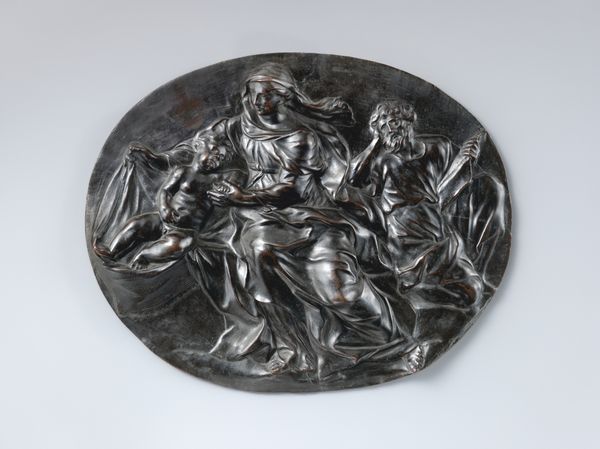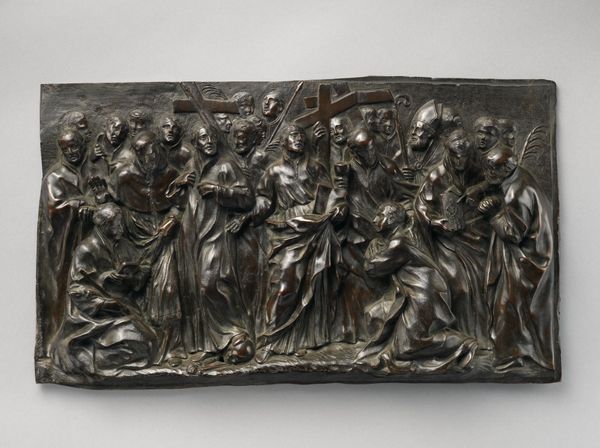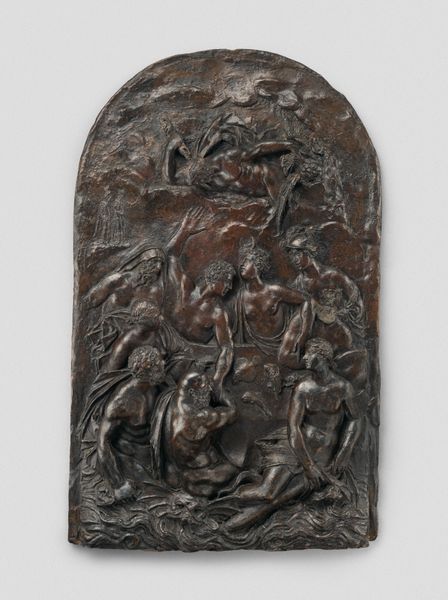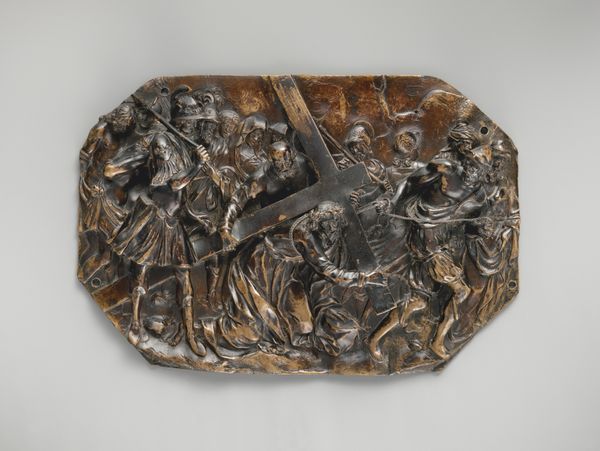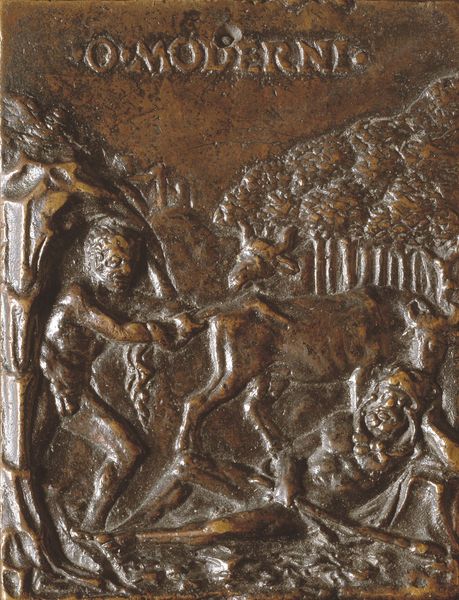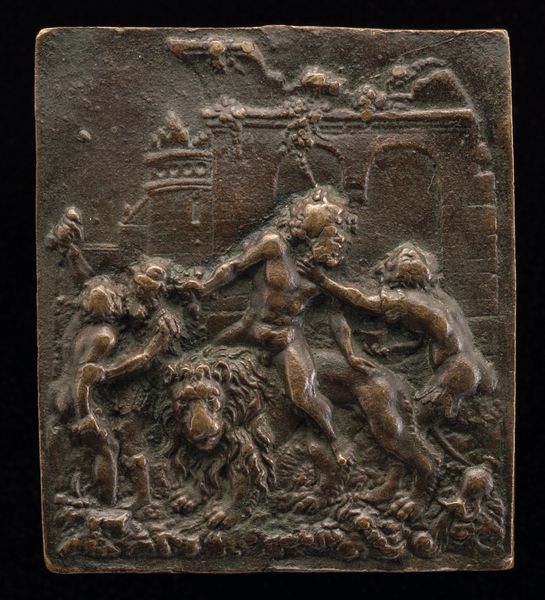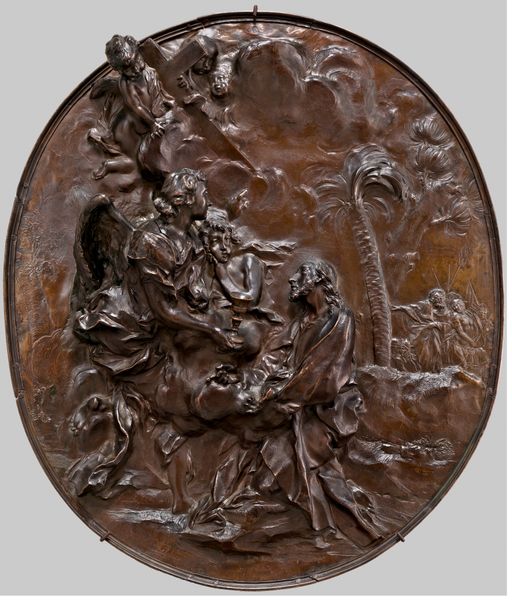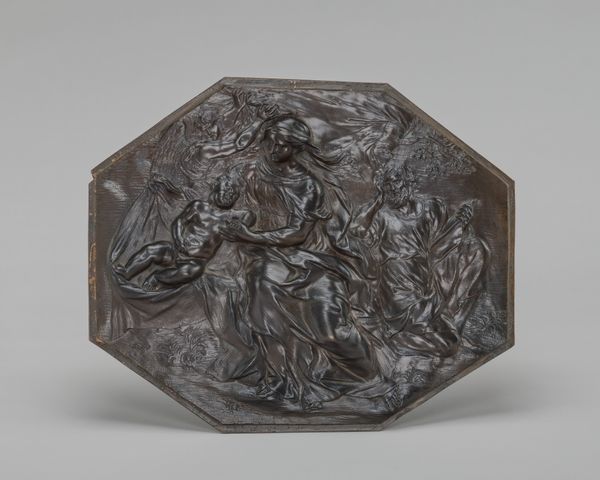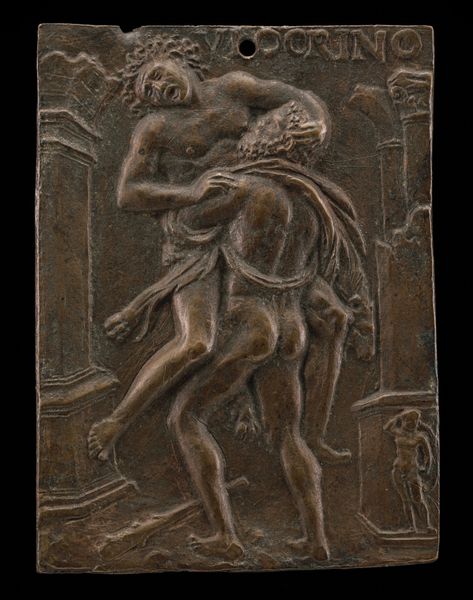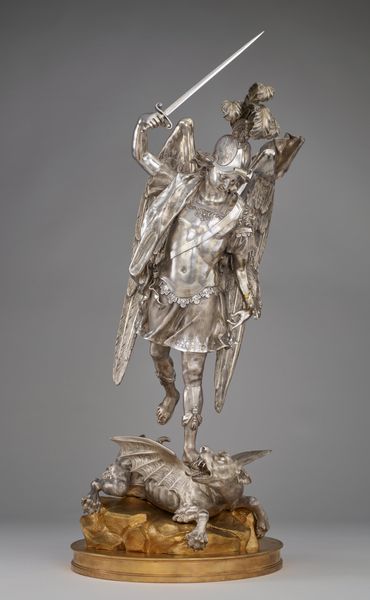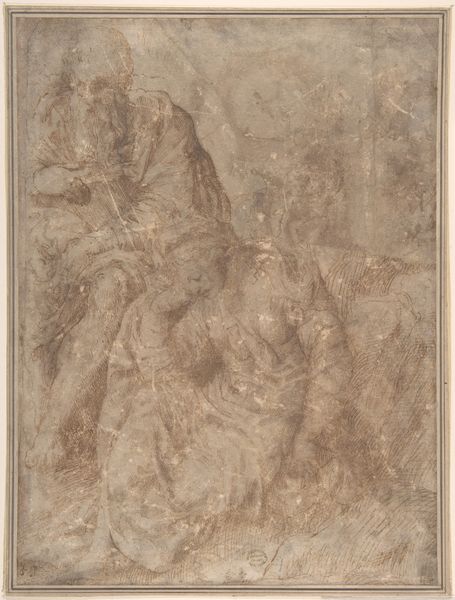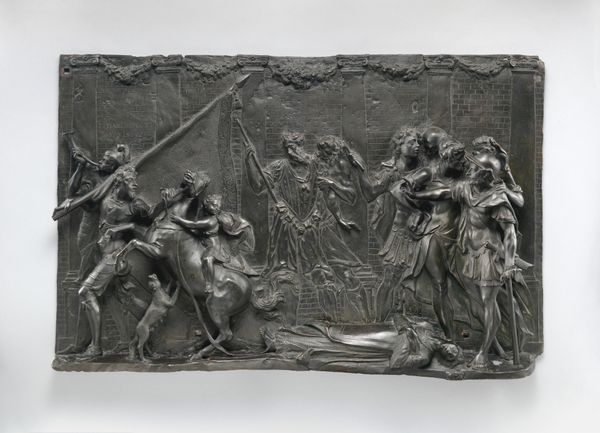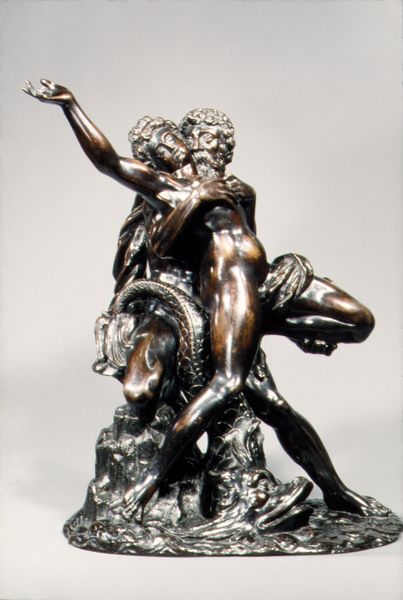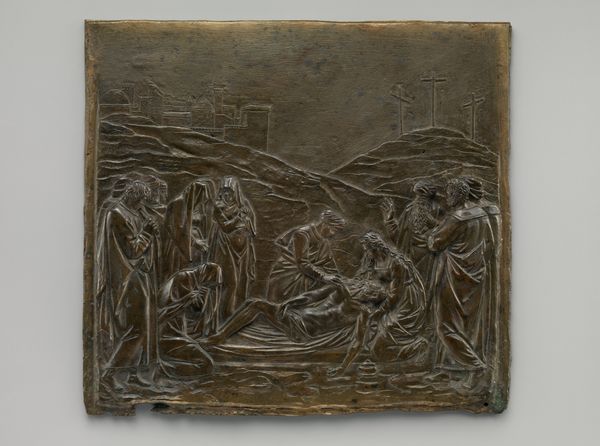
relief, bronze, sculpture
#
narrative-art
#
sculpture
#
relief
#
bronze
#
mannerism
#
figuration
#
sculpture
#
history-painting
#
erotic-art
Dimensions: height 52.5 cm, width 24 cm, thickness 7 cm
Copyright: Rijks Museum: Open Domain
Curator: So, here we have Adriaen de Vries's bronze relief, "Bacchus Finding Ariadne on Naxos," circa 1611, a truly dynamic scene residing here at the Rijksmuseum. Editor: It's intense! It feels like stepping into a dream... or maybe a nightmare, depending on how Ariadne feels about being found like that. There's such drama in those bodies, and a strange stillness too. Curator: That contrast you point out is compelling, it’s inherent to mannerism, isn't it? De Vries captures the moment Bacchus, the god of wine, discovers the abandoned Ariadne on the island of Naxos. Note the intricate textures achieved with bronze. Editor: Bronze is such a grounding material, isn’t it? Look at the sheen of those bodies, the way light reflects...it speaks of process, of the skill in the furnace and then the hand… How do you think its making shaped how people saw the scene, saw their myths and materials mingling? Curator: A great question. Think of the politics of bronze itself. It's luxury made permanent, history cast and cooled. De Vries was working for powerful patrons, channeling these stories into portable objects of status. But I wonder about Ariadne. Is she a prize or someone rescued from despair? It's that uncertainty which moves me. Editor: Absolutely, there's this ambiguity, even vulnerability in how she reclines while everyone else bursts forth into motion. Abandonment, salvation... it's quite a material tension held in the composition too – she looks heavier, denser somehow, than the flailing Bacchus. And look at Cupid below… almost petulant? He feels strangely present with his solid form amid this parade of passion. Curator: Yes, the Cupid grounds it and he is a reminder that love itself is complicated. This isn't a simple rescue, it’s about power, desire, and maybe even coercion, captured in gleaming bronze for the ages. Editor: It's wild to think this shiny surface contains so much, isn't it? Thanks to De Vries’ deft material practice and process, these ancient power dynamics resonate still. I like its weight, in every sense of the word.
Comments
rijksmuseum about 2 years ago
⋮
The god Bacchus, accompanied by a satyr with a torch, discovers the sleeping Ariadne and falls in love with the princess. It is hardly a coincidence that Cupid, the god of love, is seated in the foreground. De Vries was court sculptor to the eccentric Emperor Rudolf II, a lover of mildly erotic art. This relief was thus most likely made for the emperor or someone in the imperial household.
Join the conversation
Join millions of artists and users on Artera today and experience the ultimate creative platform.
